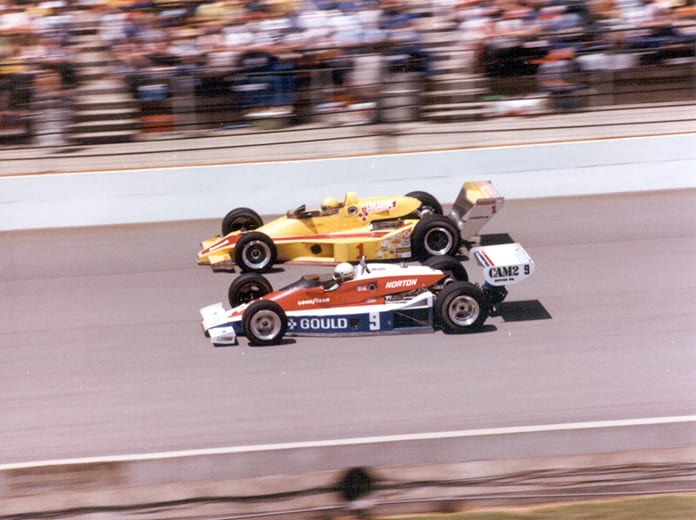Then suddenly, on the Friday evening before Sunday’s race, the speedway announced additional qualifying for 9 a.m. Saturday morning. All bumped cars could re-qualify, with those exceeding the slowest qualifier’s speed added to the field.
In an exciting two hours, 11 cars attempted. Dana Carter barely missed the cut because his car owner refused to buy a new set of tires. Bill Vukovich and Snider made it.
In the midst of this month of rancor and outrage, stepped a refreshing presence. A handsome, humble, blue-collar Californian with an all-American success story that rescued the month — Rick Mears.
Mears, with a background in sprint buggies and off-road racing, was running a backhoe in his Bakersfield hometown in 1976 when Bill Simpson called. Simpson wanted him to test his Formula 5000 car at California’s Willow Springs Int’l Raceway.
When Mears turned laps two seconds quicker than Simpson, Simpson signed him to drive his Formula car and gave Mears his first shot in an Indy car for the 1976 California 500. Mears responded with an eighth-place finish.
Mears was at Indianapolis in 1977 but failed to qualify. However, he caught Roger Penske’s attention. And to the surprise of many, “The Captain” signed him to sub for Mario Andretti while Andretti pursued the 1978 Formula One championship.
Mears qualified Penske’s car on the front row for the 1978 500 and his star began a rapid ascension. Still a virtual unknown when he arrived at Indianapolis in 1979, Mears quietly went about his business amidst the chaos roiling around him.
A Pole Day rainout pushed the run for the top starting spot to Sunday. Tom Sneva appeared to have his second consecutive pole wrapped up until Mears, the last in the qualifying line, took to the track.
In a run that became “The Rocket’s” trademark, smooth and deceptively fast, he beat Sneva’s speed by a full mile per hour.
“That was as exciting as thinking about winning the race,” Mears said with a grin. “And it made Roger happy that I bumped Sneva off the pole.”
Previously Penske’s driver, Sneva parted company with him on less than cordial terms following the 1978 season.
When the green flag waved, all the discord, hostile feelings and harsh words vanished. Teams focused on one thing — competing in the 63rd Indianapolis 500.
In front of several hundred thousand fans, including former President Gerald Ford, Al Unser jumped to the lead aboard Jim Hall’s revolutionary “Yellow Submarine.” The first true ground-effects car in speedway history, it would irrevocably transform the face of Indy car racing.
Unser gained nearly a second a lap on the field in the first handful of circuits and led until he pitted on lap 25. That’s when Mears took over.
While he didn’t dominate the race, Mears remained among the top three all afternoon, leading on several occasions. As the race wound down, it became a battle between Mears and teammate Bobby Unser.
Unser was driving the new Penske PC7, Penske’s version of a ground-effects car. Penske had offered Mears one of the new cars as well, but Mears opted to stick with the well-developed PC6.

Suddenly Unser slowed. Mears went around him to lead the final 19 laps and win his first of four Indianapolis 500s.
Later, Mears insisted, “I hated to see it for Bobby’s sake. I was running close to him and heard the RPMs come up. I thought he missed a shift. It turned out he lost fourth gear.”
When Bobby Unser led, Mears had taken a couple of runs at him, just to see if he could get around him when money time arrived. Mears believed he could’ve.
“You take wins any way you can get them,” said Mears sagely about his first 500 win. “But I’d rather it would’ve been a shootout to the end.”
His win was a popular one for the newcomer. Still, few imagined then that Mears’ genius touch at the wheel would provide fans with some of the most breathtaking moments in speedway history.
